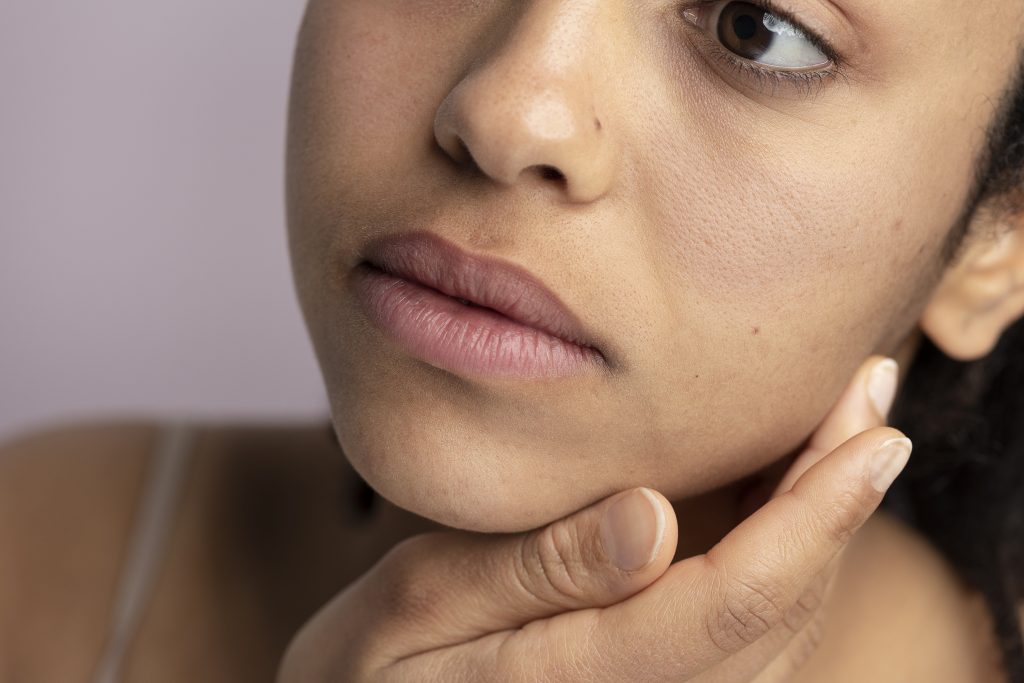Embark on a comprehensive journey through the guide that unveils the intricacies of uneven skin tone. Whether you’re grappling with this common concern due to inherent factors or seeking effective solutions, this manual has been meticulously designed to provide you with invaluable knowledge, strategies, and motivation essential for addressing uneven skin tone and working towards restoring your skin’s clarity and radiant vibrancy.

Skin texture refers to the surface condition of the skin. A good skin texture is characterized by smoothness, softness, and firmness due to sufficient hydration and support from collagen and elastin. On the other hand, uneven skin texture appears coarse, rough, dull, and dry, often accompanied by sun damage.
Prolonged and unprotected exposure to the sun’s UV rays can lead to an uneven distribution of melanin, causing hyperpigmentation and dark spots.
Skin inflammation due to acne, eczema, or other conditions can trigger the overproduction of melanin, leading to uneven pigmentation as the skin heals.
Fluctuations in hormone levels, such as during pregnancy or with certain medical conditions, can stimulate melanin production and result in uneven skin tone.
As you age, accumulated sun damage, slower cell turnover, and decreased collagen production can contribute to an uneven skin tone.
Genetic factors can play a role in how your skin responds to various triggers and how prone you are to developing pigmentation irregularities.